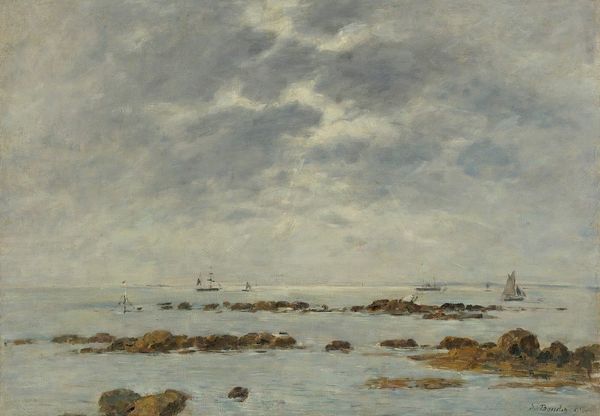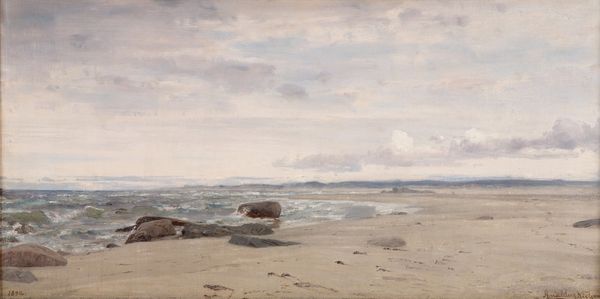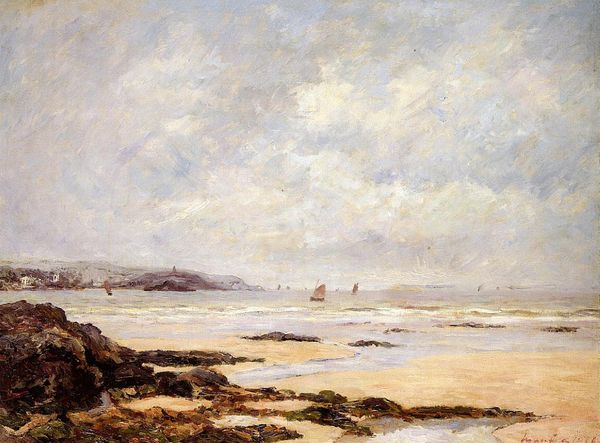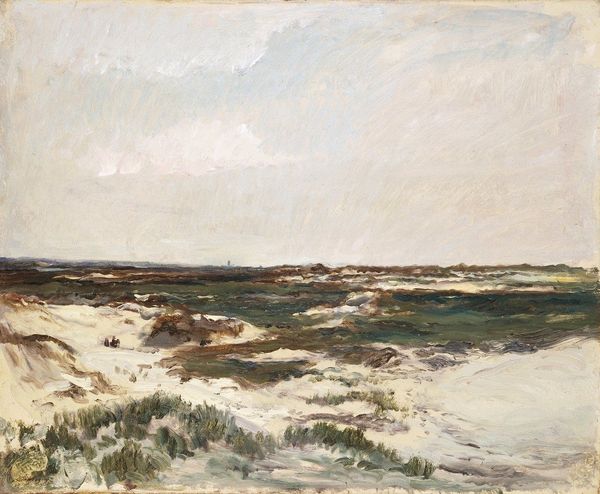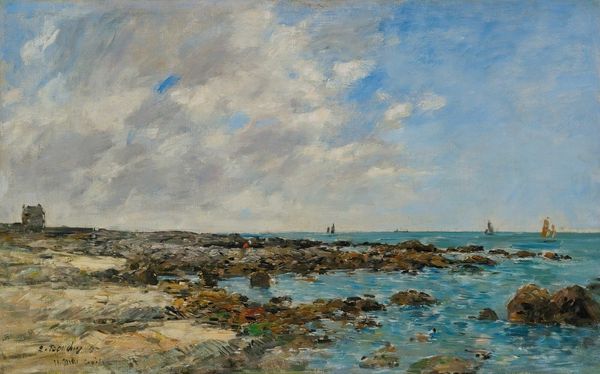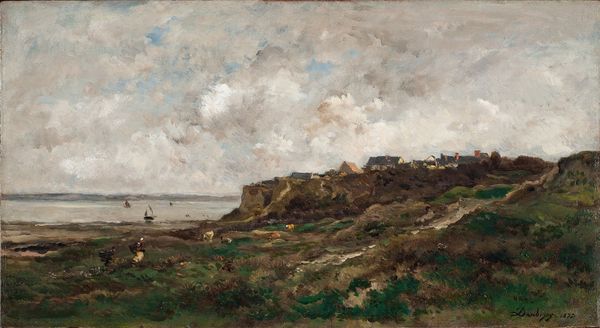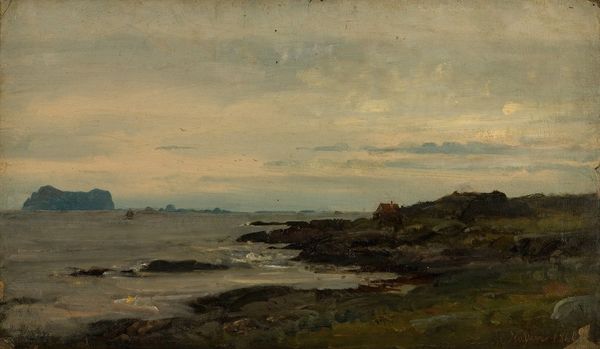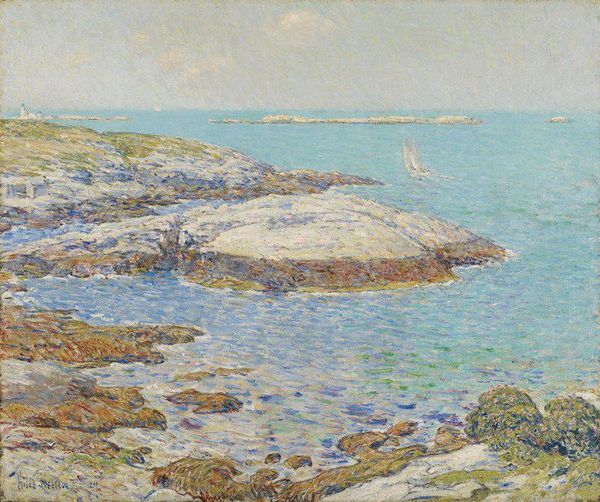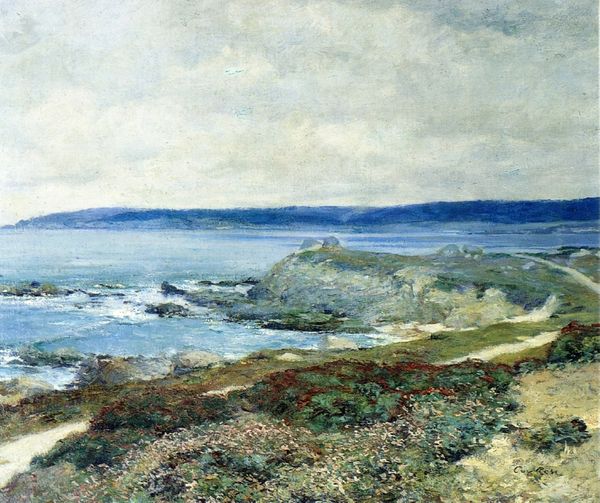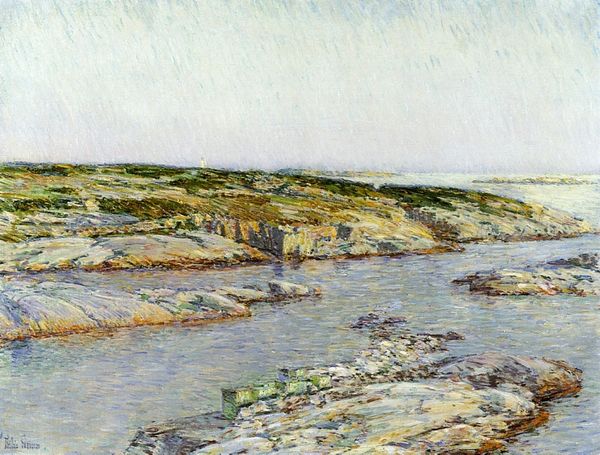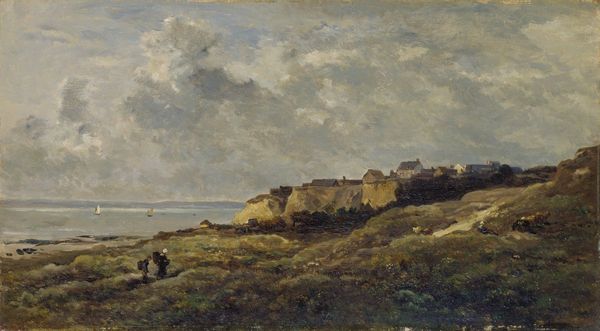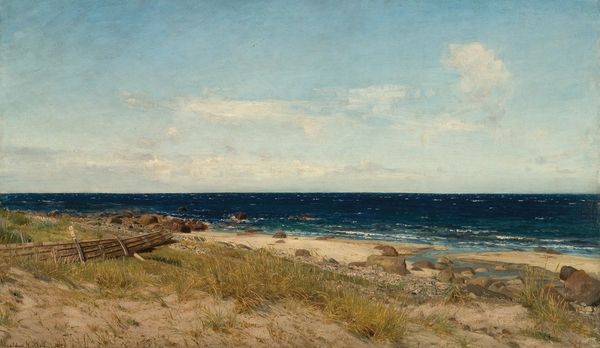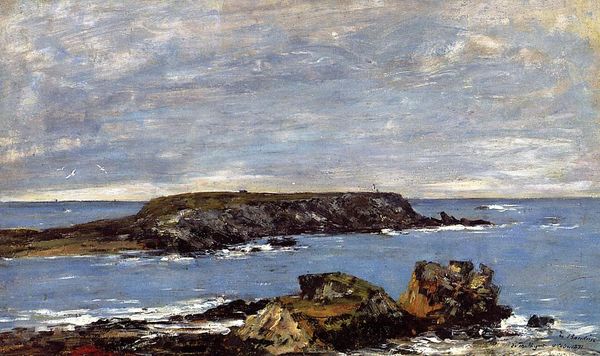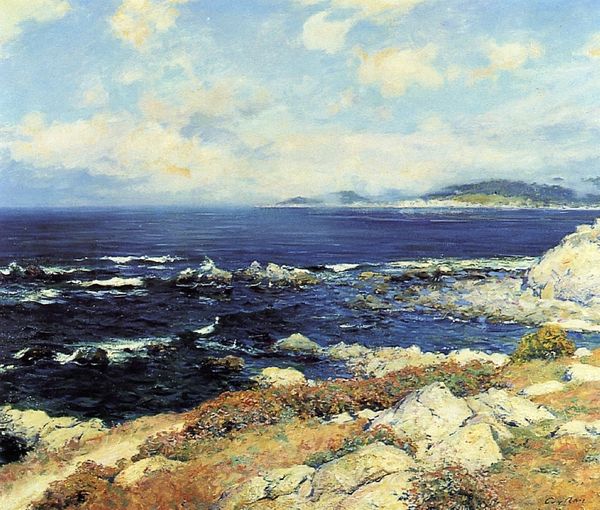
#
abstract expressionism
#
sky
#
abstract painting
#
head
#
landscape
#
charcoal drawing
#
impressionist landscape
#
possibly oil pastel
#
oil painting
#
ocean
#
acrylic on canvas
#
naturalistic tone
#
seascape
#
natural-landscape
#
men
#
watercolor
#
sea
Copyright: Public domain
Editor: Here we have Pierre Emmanuel Damoye's "Sur la Côte Bretonne," painted in 1883. It's a landscape of the Brittany coast, and what strikes me is how muted the colors are, creating almost a somber, contemplative mood. What do you see in this piece, especially concerning its historical and social implications? Curator: Well, beyond the immediate impression of a quiet coastline, this painting offers a window into the socio-economic realities of 19th-century Brittany. Damoye presents not just a landscape, but a tableau hinting at the lives of Breton people, deeply connected to the sea, yet often marginalized. Consider the role of landscape painting in constructing national identity and how this artwork engages, or perhaps subtly resists, that project. What does it mean to depict this region and its people with such quiet restraint? Editor: That’s a good point. It feels less romanticized than other landscapes of the time. Curator: Exactly. Instead of idealizing rural life, Damoye gives us something more subtle, perhaps even critical. The figures are small, almost blending into the environment, highlighting their dependence on and vulnerability to the natural world. How does the artist’s choice of a muted palette contribute to this sense of understated realism and possibly a commentary on the economic hardships faced by coastal communities? What impact might this realistic and yet somehow still artistic landscape had at that time? Editor: I hadn't considered that it could be a commentary on their struggles. I was only focusing on the aesthetic qualities of the artwork. Curator: And that's understandable! Art is multifaceted. But by situating the work within the context of the time period, we can glean much more. Editor: This was insightful; thank you. I’ll consider the social context of artworks more actively. Curator: Absolutely! Thinking about the “why” behind the art changes how we see.
Comments
No comments
Be the first to comment and join the conversation on the ultimate creative platform.
